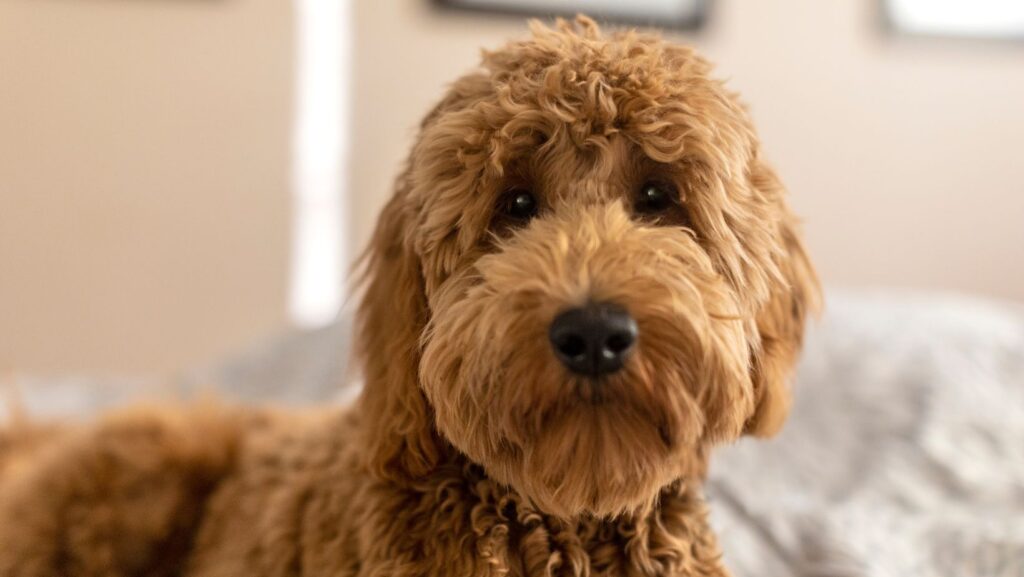With ever-increasing popularity, the goldendoodle is one of the most popular companion dogs. These golden retriever and poodle mixes are renowned for their teddy bear appearance with a hypoallergenic coat.
However, not all goldendoodles are the offspring of a golden retriever and a poodle. If you’re interested in these designer dog breeds, you’ll come across classifications starting with F, such as an F1 or F2.
Our article will walk you through the differences between these two generationally different goldendoodles while touching on others to help you discover the best goldendoodle for you.
Goldendoodle Generations Explained
All the letters and numbers may seem complicated at first, but the goldendoodle generation follows a pretty simple logic. A golden retriever bred with a poodle gets you a first-generation goldendoodle, classified as an F1 goldendoodle.

The offspring of two F1 goldendoodles are second-generation goldendoodles or F2 goldendoodles – and the puppies of two second-generation goldendoodles are F3 goldendoodles.
However, the hypoallergenic coat isn’t always a guarantee with first, second, and third-generation goldendoodles. That’s why breeders often backcross first-generation goldendoodles with a poodle to get the desired hypoallergenic coat.
This backcrossing not only makes the coat more hypoallergenic but also curlier. It’s a trait that many goldendoodle owners want. These goldendoodles are referred to as F1b or F2b goldendoodles, depending on the goldendoodle parent.
Even with backcrossing, the coat may not have the desired characteristics. Although goldendoodles don’t shed, they may produce more allergens than a poodle. A breeder may then decide to backcross a goldendoodle once more to guarantee a fully hypoallergenic coat.
For these goldendoodles (mixes of F1b goldendoodles – which you can read about in more detail here – and poodles), you add another b at the end, making them F1bb goldendoodles.
Generally, the more poodle a goldendoodle has in its genetic pool, the more hypoallergenic the coat is. If you’re allergic to pets and want to adopt a goldendoodle, you may need to carefully consider these to have a dog with a coat that doesn’t trigger allergic reactions.
Goldendoodle Generations: A Quick Summary
Here’s a table that summarizes the goldendoodle generations explained above.
| F1 Goldendoodle | Golden Retriever + Poodle |
| F2 Goldendoodle | F1 Goldendoodle + F1 Goldendoodle |
| F3 Goldendoodle | F2 Goldendoodle + F2 Goldendoodle |
| F1b Goldendoodle | Goldendoodle + Poodle |
| F2b Goldendoodle | F2 Goldendoodle + Poodle |
| F1bb Goldendoodle | F1b Goldendoodle + Poodle |
| F2bb Goldendoodle | F2b Goldendoodle + Poodle |
Differences Between F1 and F2 Goldendoodles
F1 and F2 goldendoodles are more similar than F1b, F1bb, F2b, and F2bb goldendoodles, as they have the same amount of poodle and golden retriever genes. Still, there are differences between these two goldendoodle generations everyone interested in adopting a goldendoodle should know. Here’s an overview of these differences.
Coat Type and Appearance
The coats of both F1 and F2 goldendoodles vary. While some goldendoodles have curlier coats, others may be slightly wavy. Even the puppies in the same litter may have different coat types and textures. You can expect a coat ranging from slightly wavy to curly in both F1 and F2 goldendoodles.

Size
The size of F1 and F2 goldendoodles vary depending on the poodle parent. However, there’s a higher chance that an F2 goldendoodle may be larger than an F1 goldendoodle. This mostly depends on the poodle heritage of the goldendoodle.
If the poodle parent of a first-generation goldendoodle is a miniature or toy, these F1 goldendoodles are likely to be smaller than others. Often, smaller goldendoodles like these are referred to as mini goldendoodles.
Nonetheless, F2 goldendoodles tend to be taller and heavier than first-generation goldendoodles, given the poodle grandparent is a standard poodle.
Health
Both the F1 and F2 goldendoodles are healthy dogs. However, the genetic diversity in F1 goldendoodles lowers their risk of inheriting health problems associated with purebred parents.
Temperament
All goldendoodles are lively, energetic, and curious by nature, but F1 goldendoodles may inherit traits from both golden retrievers and poodles. This makes their temperament a bit difficult to predict. They can be similar to the poodle parent or more golden retriever-like.
With F2 goldendoodles, you can expect them to have a personality similar to their goldendoodle parents. For example, if one parent is gentle and calm, their puppies are likely to be the same.
F1 vs F2 Goldendoodle: Which One Is for You?
There are differences between F1 and F2 goldendoodles, but they aren’t always apparent. To decide between these two generationally different goldendoodles, it’s best to talk with the breeder about the individual characteristics of each puppy. By observing the puppy’s behavior and physical traits, you can find the right pup to adopt between an F1 and F2 goldendoodle.
